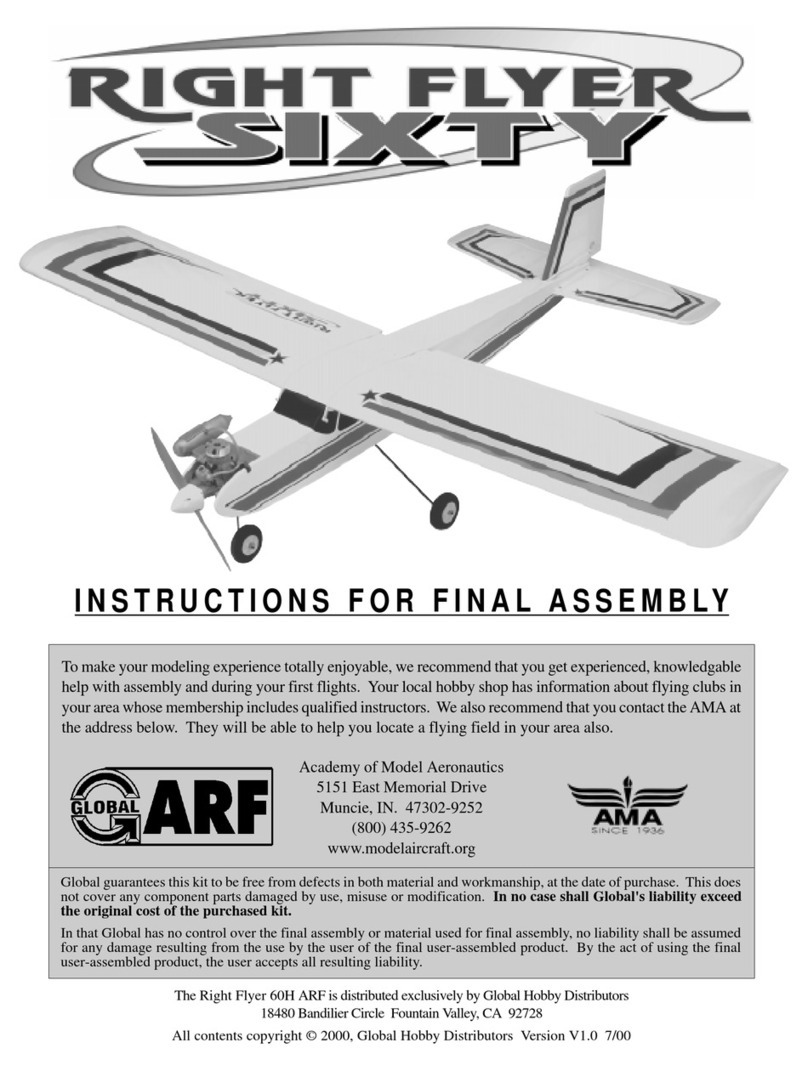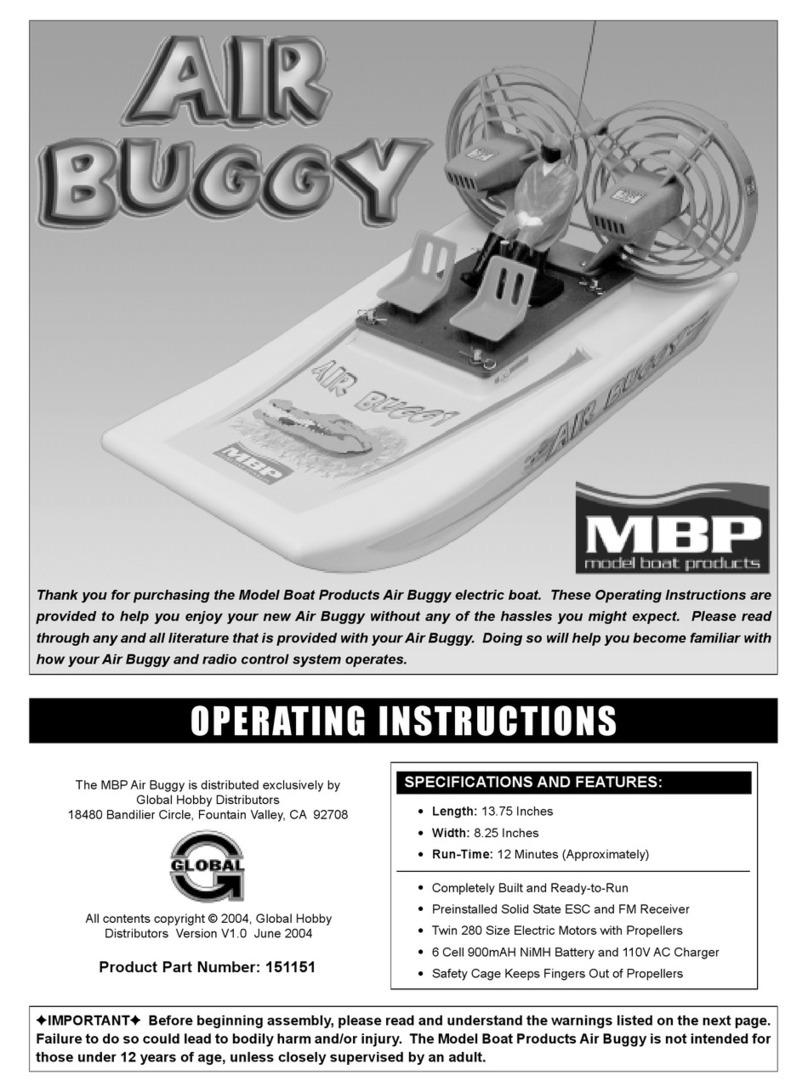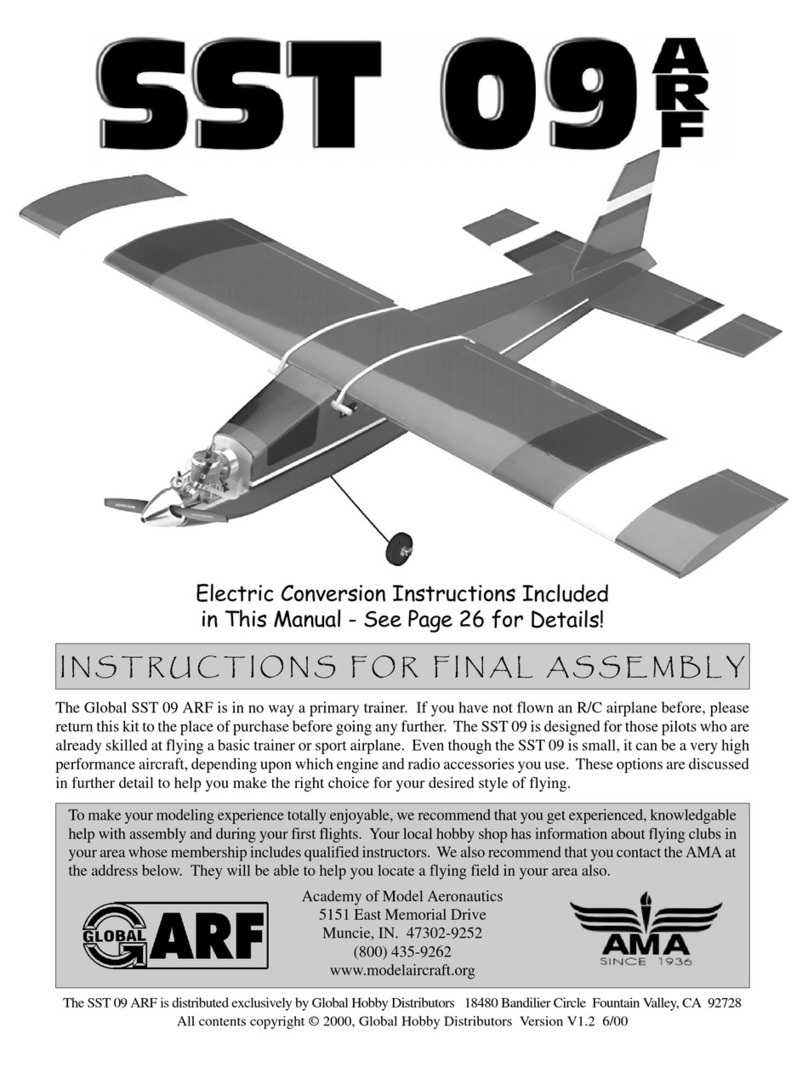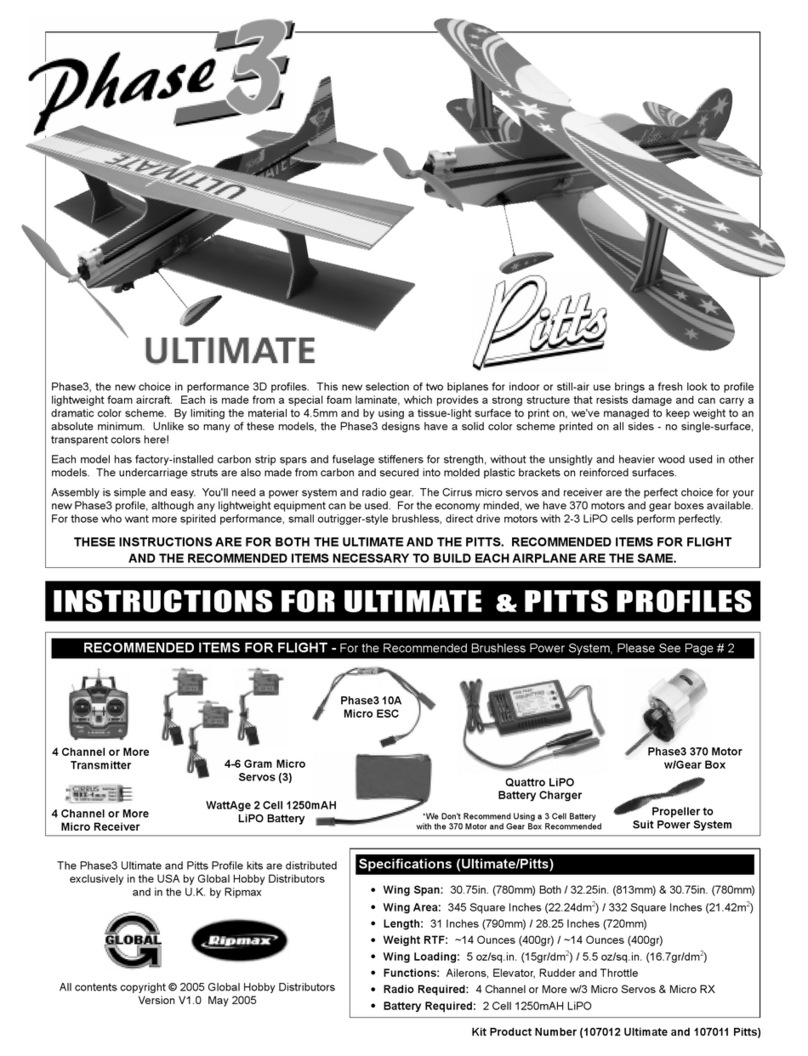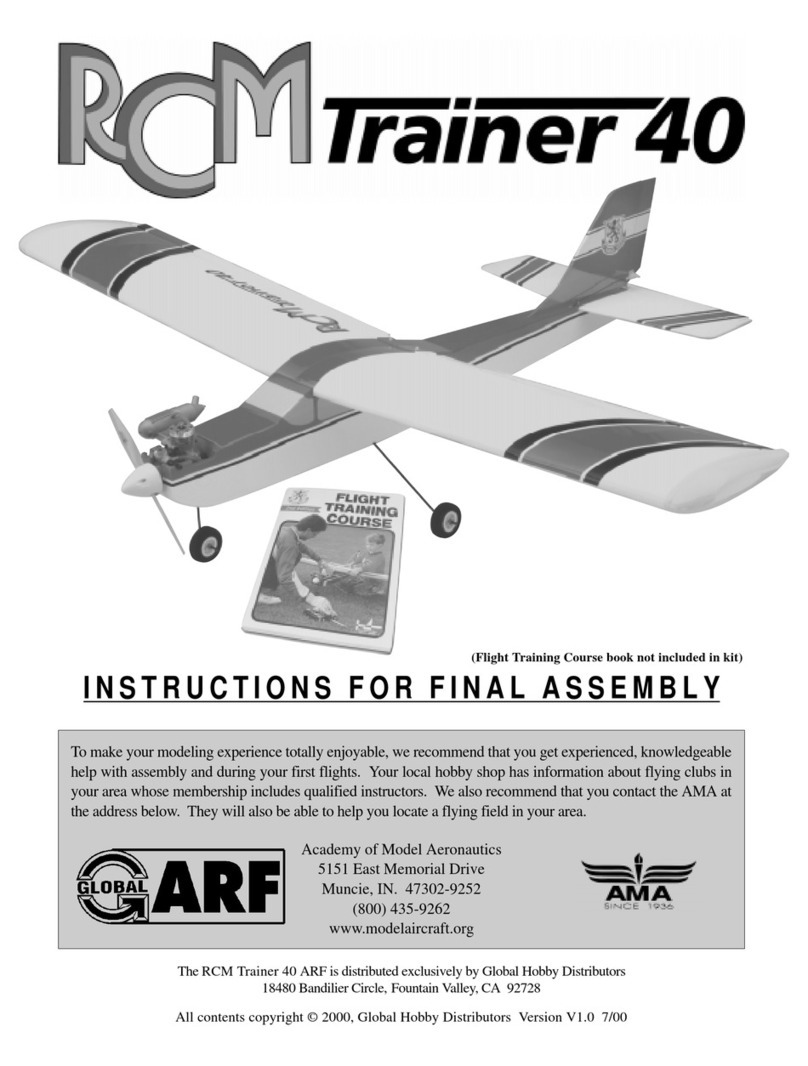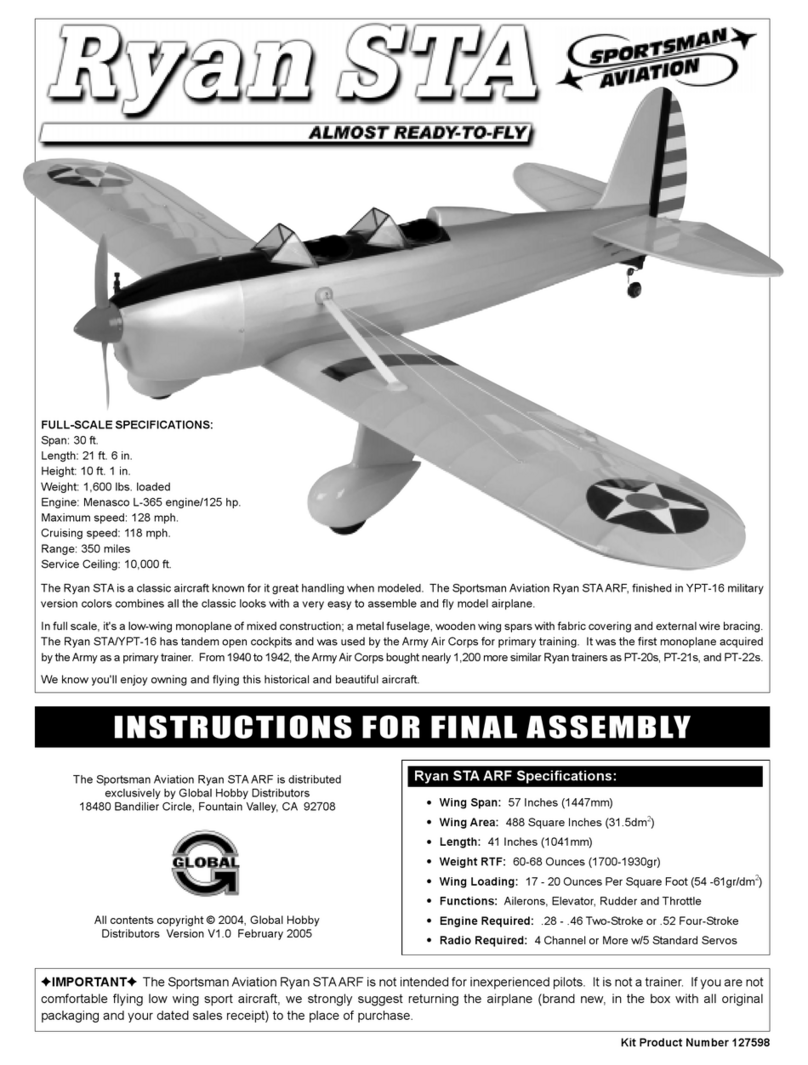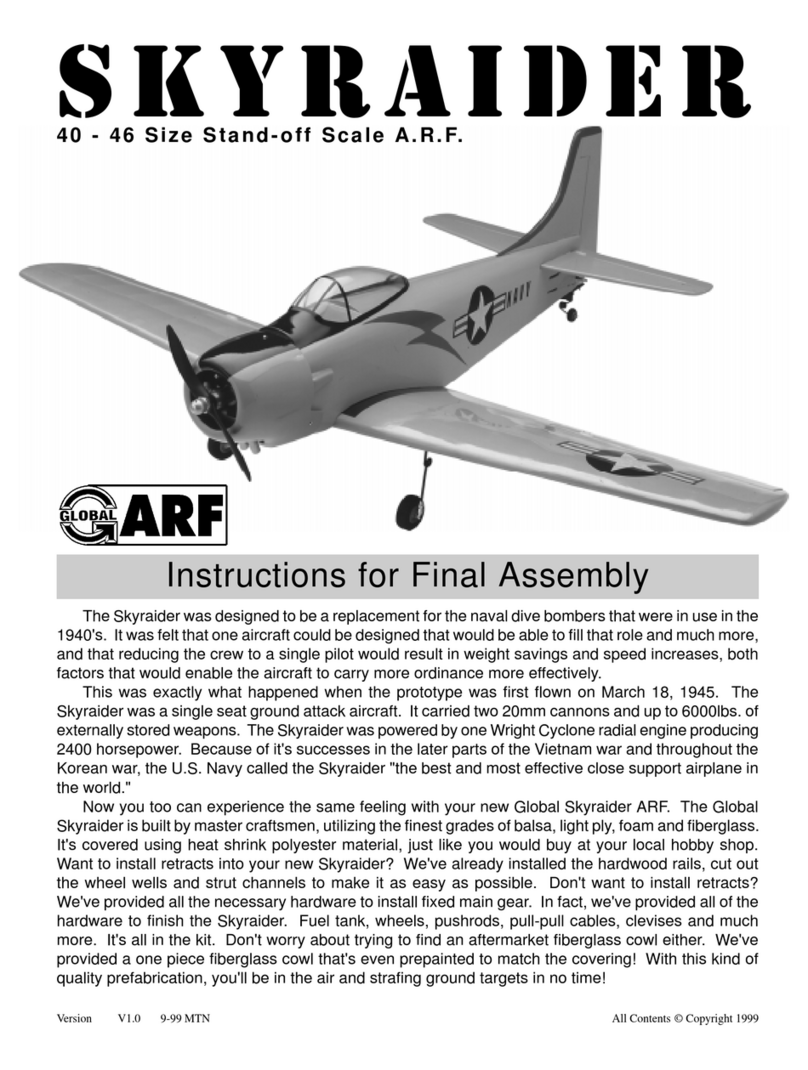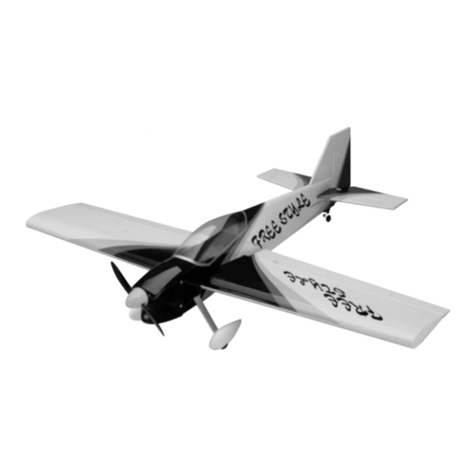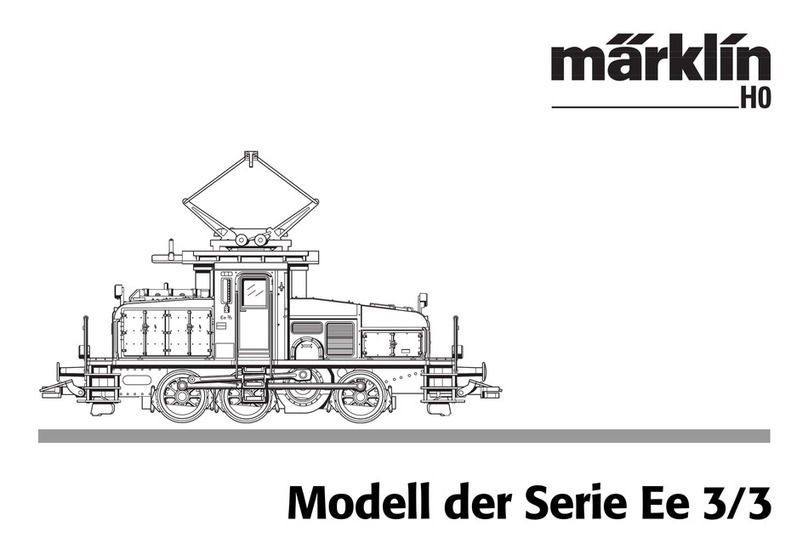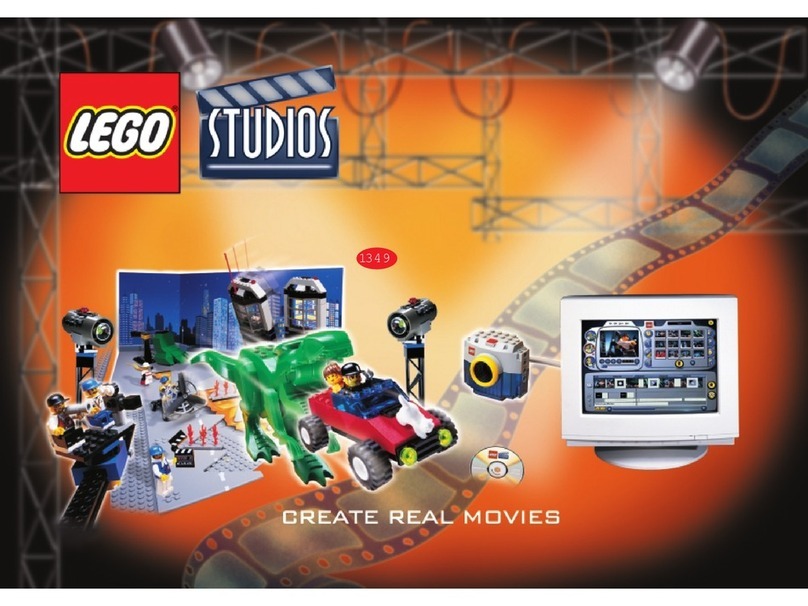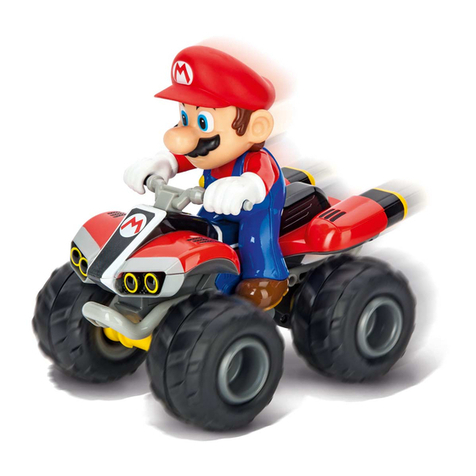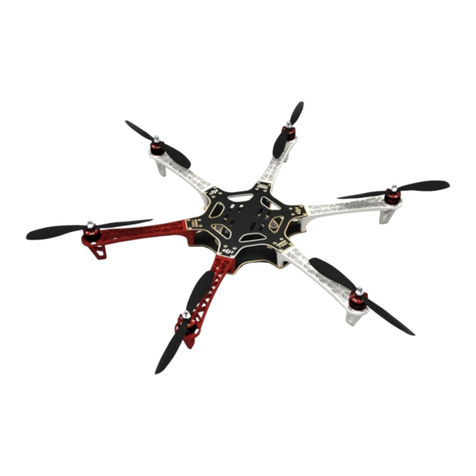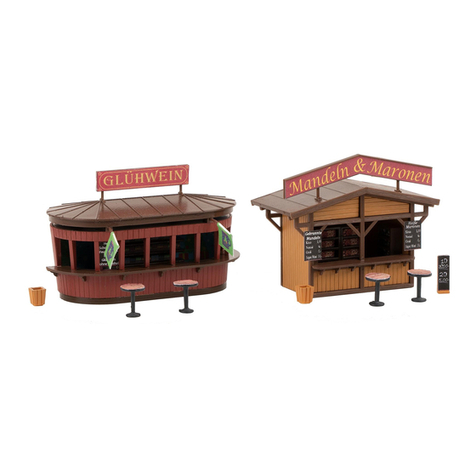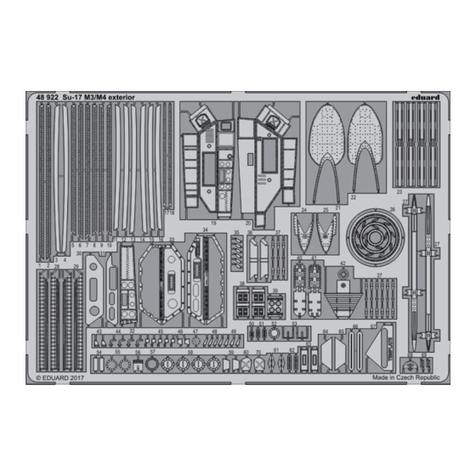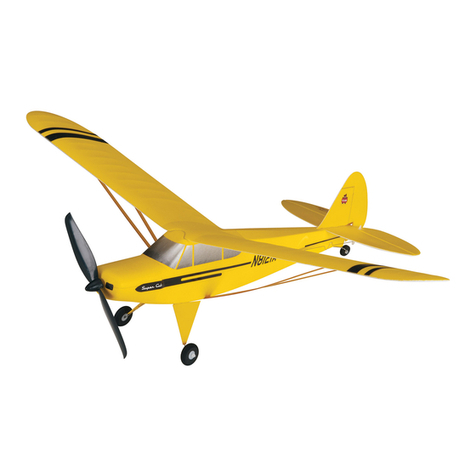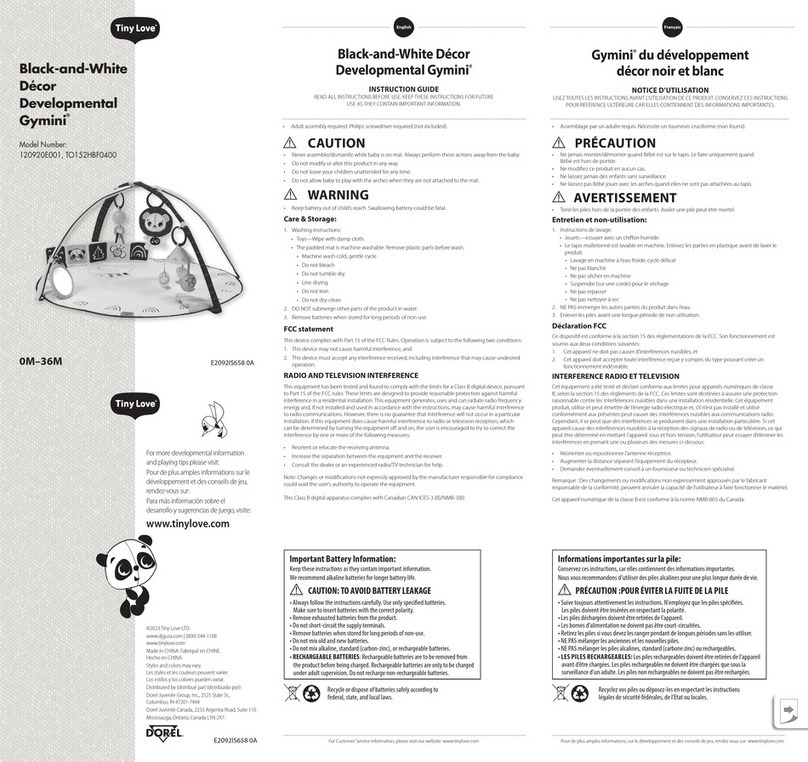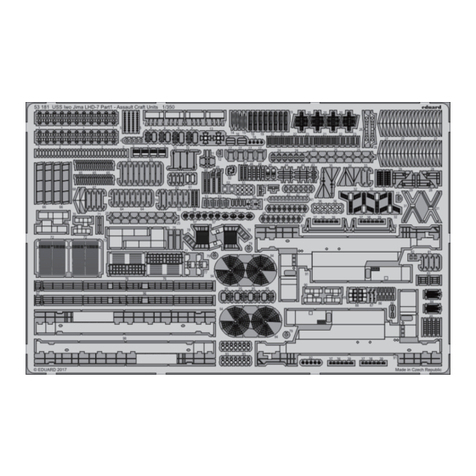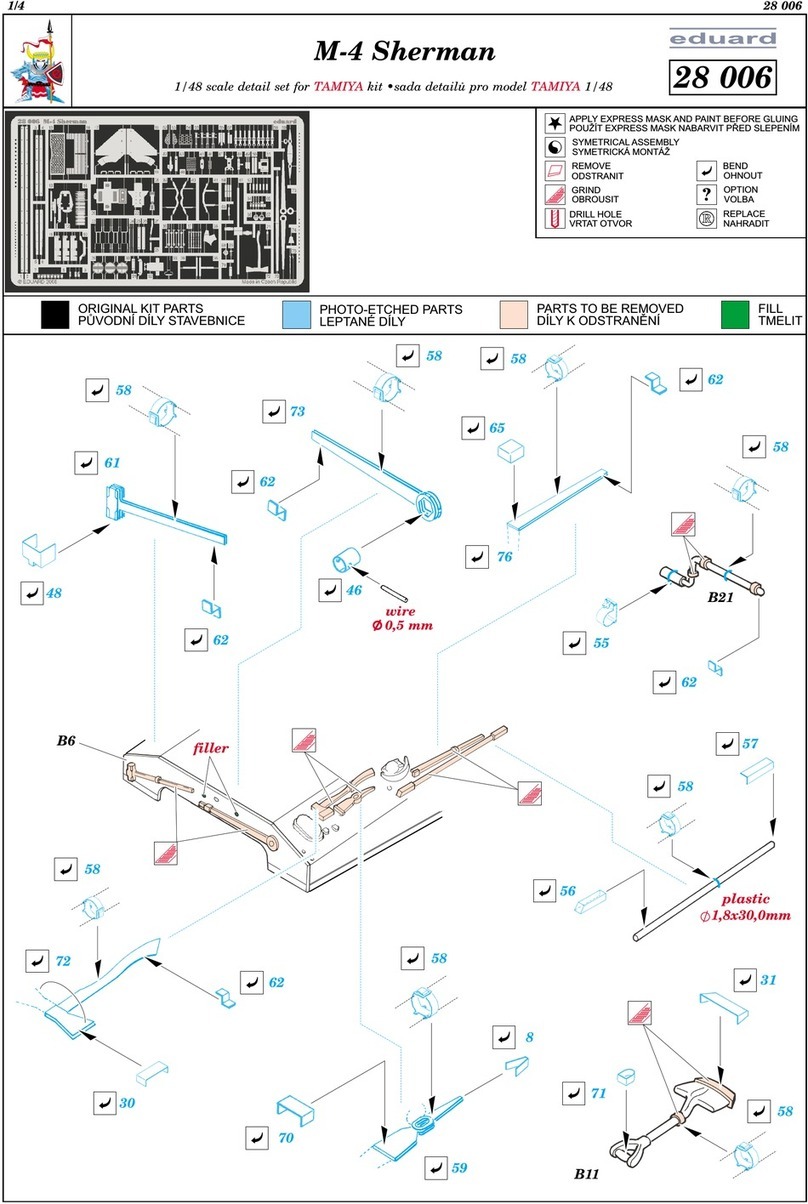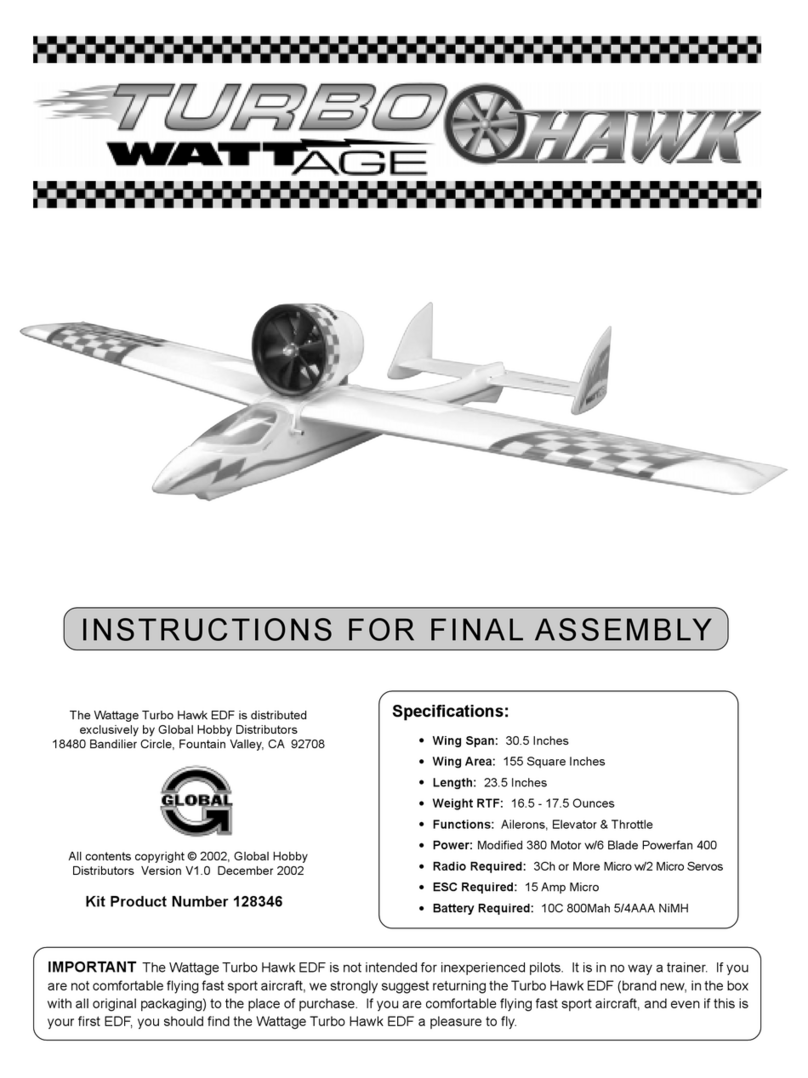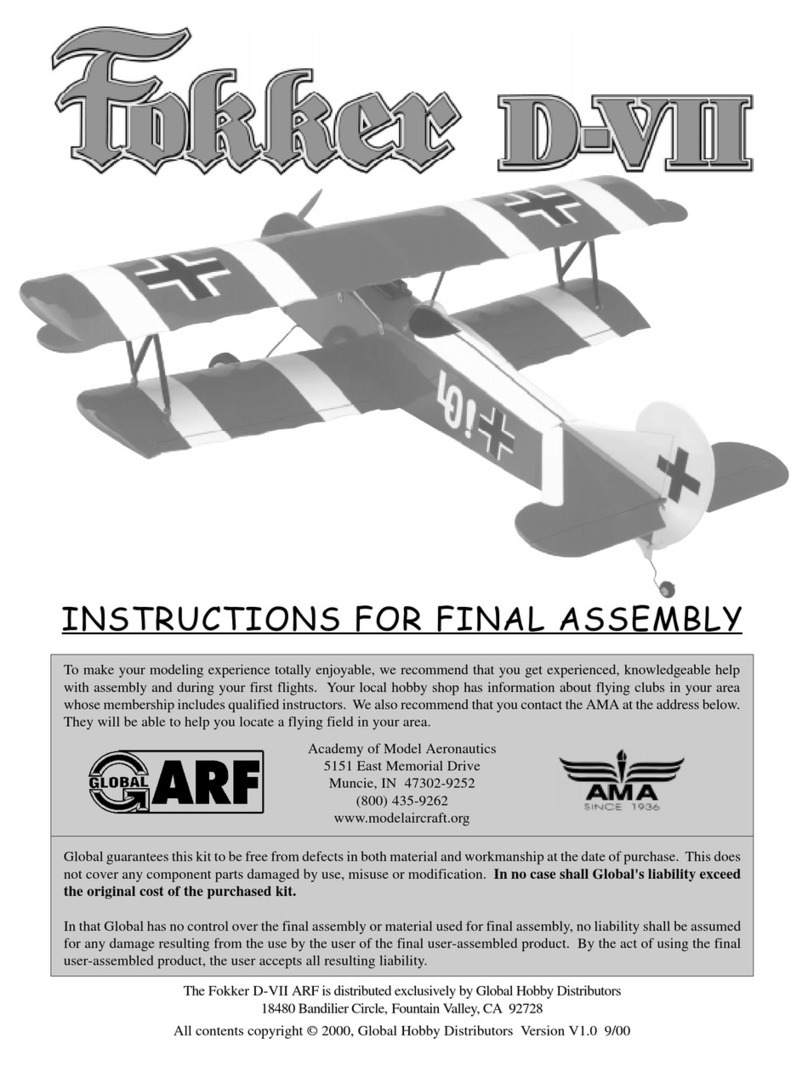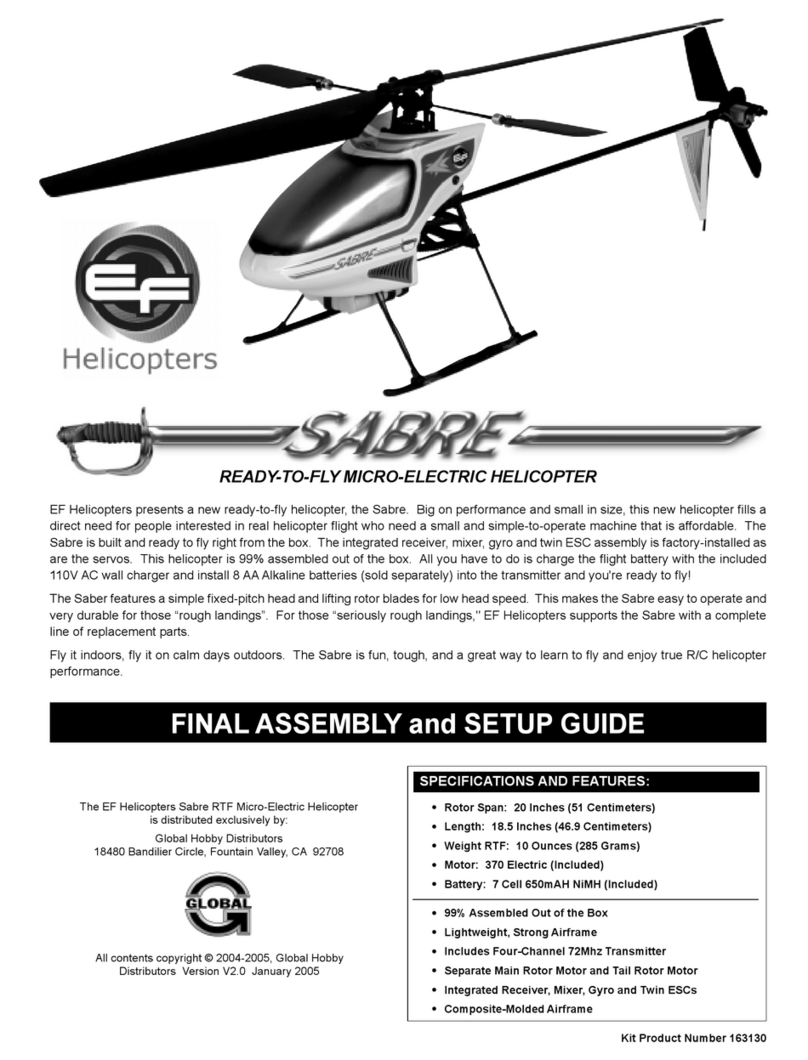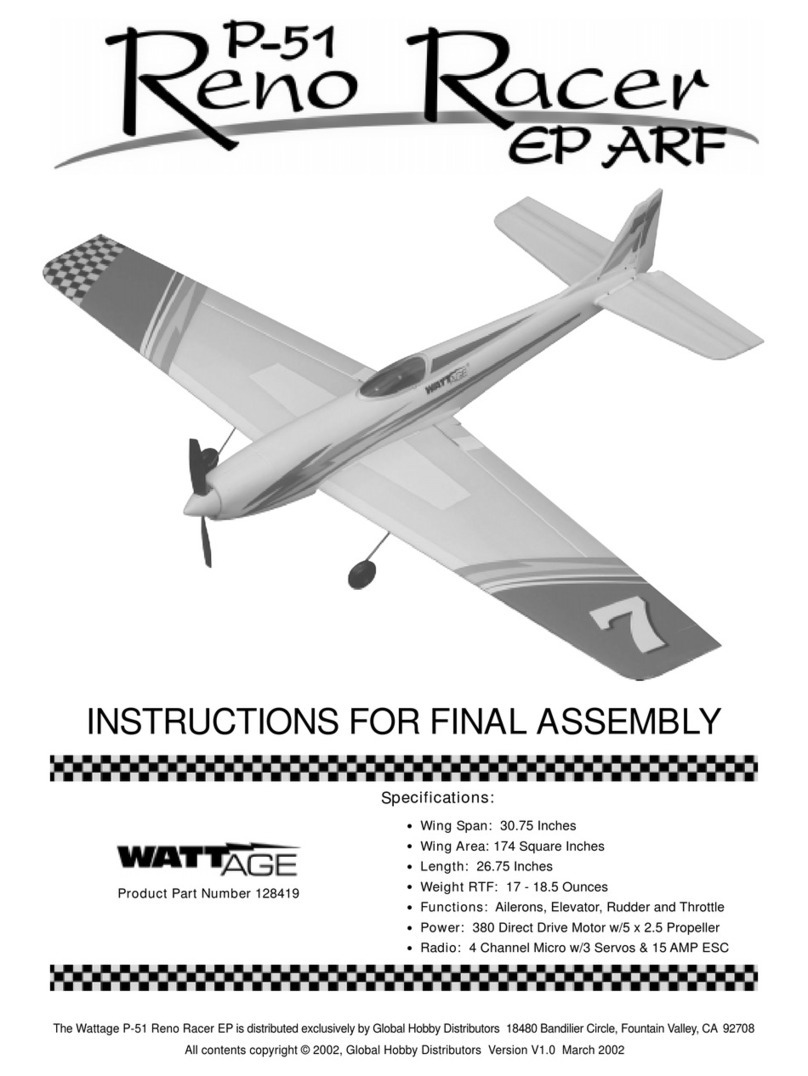
17
TEST FLYING
Elevator: 3/16 up 3/16 down
Rudder: 1/2 right 1/2 left
Aileron: 3/16" up 3/16" down
❑3) You can increase or decrease the control throws
by moving the pushrod wires in or out from the center of
the servo arm. Moving the pushrod wires out will in-
crease the control throws. Moving the pushrod wires in
will decrease the control throws.
☛It is highly recommended that you do not use any
more elevator control throw than what is recommended.
Because the Sporty EP is a short coupled airplane, it is
very sensitive to elevator control input. More elevator
input than recommended can cause the Sporty EP to
snap-roll and crash.
❑2) After you have become familiar with the flying
characteristics of the Sporty EP, you may want to increase
the control throws to the settings listed below.
SPORT FLYING
Elevator: 1/4 up 1/4 down
Rudder: 3/4 right 3/4 left
Aileron: 5/16" up 5/16" down
The Sporty EP is a gentle flyer; however, because of
its speed, it is not recommended for the beginning flier.
The Sporty EP can either be taken off from the ground
(R.O.G.) or it can be hand-launched. We don't recom-
mend R.O.G. takeoffs if you've assembled the Sporty EP
without rudder control.
Takeoffs from the ground should only be done from
a smooth surface. Apply full power and slowly feed in
right rudder to keep the airplane tracking straight. Once
sufficient airspeed has been reached, gently apply up el-
evator to lift the airplane off the ground. Climb out straight
ahead in a shallow climb to build up speed. Do not make
any steep turns right after take off or you may stall the
airplane.
To hand-launch the Sporty EP, gently grasp the bat-
tery tray between your thumb and forefinger at the C.G.
location. Hold the airplane above shoulder level and turn
on the motor to full power. With the motor running at full
power, gently toss the Sporty EP straight ahead. Do not
throw it up at an angle. Let the airplane fly straight and
level to pick up airspeed, then climb up to your desired
altitude. Be careful not to climb too steeply after hand-
launching or the airplane could stall.
In the air, the Sporty EP flies as gently or as aggres-
sively as you want it to. Set up with rudder and elevator
control, the Sporty EP flies like a low wing sport trainer.
Set up with aileron, rudder and elevator, the Sporty EP
flies like a seasoned aerobatic park-flyer. You can expect
flight times ranging from 5 - 10 minutes depending upon
the battery and motor used.
Landings should be done with power off. Put the
Sporty EP in a gentle descent and glide it onto the run-
way. Be carefully not to turn too steeply during power-off
descents at low airspeed. If you need to turn, apply suffi-
cient power, then reduce power after the turn.
Center of Gravity: Most commonly referred to as the
C.G. or balance point, it is the point at which the airplane
is in complete balance in all three axes.
Clevis: Part of the control system, either made out of
nylon or metal. It connects the pushrod wire to the con-
trol horn mounted on the control surface.
Control Horn: Part of the control system, the control
horn is mounted to the control surface. It allows the push-
rod to be connected to the control surface. Almost all
control horns are adjustable to allow for more or less con-
trol surface movement.
Cycling: The act of fully charging and discharging the
flight battery. Cycling the battery increases performance
and duration.
Dihedral: The upward angle of each wing half. Dihe-
dral creates more stability.
Elevator: The elevator is the control surface on the back
of the airplane that moves up and down. This surface
controls pitch.
Epoxy: A two-part glue containing a resin and a hard-
ener. Epoxy is available in several drying times and is
stronger than C/A glue. Epoxy is used in high stress ar-
eas such as where wing halves are joined.
ESC: An acronym for Electronic Speed Control. See
Motor Controller below.
Horizontal Stabilizer: Mounted in the rear of the air-
plane, the stabilizer works with the elevator to control
pitch.
Motor Controller: Usually called an electronic speed
control (ESC), the motor controller controls the speed of
the motor. Motor controllers can also be simple on and
off switches.
FLYING THE SPORTY EP
GLOSSARY OF TERMS





















